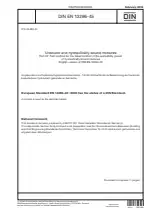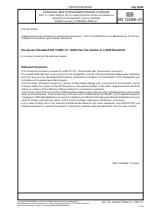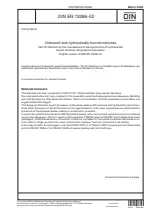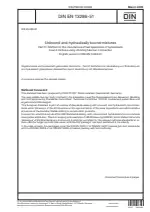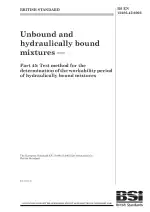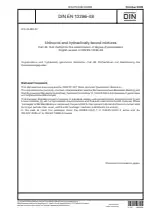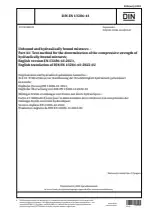Unbound and Hydraulically Bound Mixtures - Part 45: Test Method for the Determination of the Workability Period of Hydraulically Bound Mixtures
Also Known As:
The DIN EN 13286-45 standard provides guidelines for determining the workability period of hydraulically bound mixtures using granular materials. The standard outlines two methods for conducting this test: delayed compaction and sonic propagation.
The delayed compaction method involves measuring the density of the mixture at different time intervals after compaction. This allows for the determination of the workability period, which indicates the time frame in which the mixture remains compactable before it becomes unworkable.
The sonic propagation method, on the other hand, is not suitable for hydraulically bound mixtures with a grain size (D) equal to or less than 6.3 mm. This method involves measuring the velocity of sound through the mixture, which can be used to assess its workability period.
| Descriptors | Bound, Building material mixtures, Building materials, Compacting, Compression testing, Conglomerates, Construction, Construction materials, Definitions, Densimetry, Density, Determination, Determination of content, Duration, Elastic properties (fluids), Grain sizing, Hydraulic, Laboratory testing, Mineral aggregates, Mixtures, Modulus of elasticity, Particulate materials, Pavements (roads), Processibility, Processing, Road construction, Rocks, Sample division, Samples, Sampling methods, Sound propagation, Specification (approval), Specimen preparation, Test specimens, Testing, Testing conditions, Unbound, Workability period, Workability time, Sample preparation |
| ICS Codes | 93.080.20 - Road construction materials |
| Language(s) | English |
| File Size | 716.8 KB |

